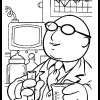Hi All,
Bit of background: I'm quality systems manager in a chicken cutting factory in the UK.
The operation is quite simple, intake of whole birds > automatic cutting > Packing. this is chilled or frozen.
For the frozen line, we use a spiral freezer where the individual chicken cuts (e.g. drumsticks) are transferred onto the freezer belt, go through the freezer equipment and come out at -18˚C after about 45min. - We work to BRCGS food.
I have been doing a lot of research online and on this forum, in addition to speaking with technical staff in my company, and I'm quite puzzled there isn't a clear guidance on 2 particular things: 1-what the "quick" in "quick frozen" actually means in quantifiable terms and 2- what "brief periods" mean in the legislation quoted below.
The legislation I am considering here is The Quick-frozen Foodstuffs (England) Regulations 2007 which states:
“quick-frozen foodstuff” means a product–(a) comprising food which has undergone a freezing process known as “quick-freezing” whereby the zone of maximum crystallisation is crossed as rapidly as possible, depending on the type of product; and(b) which is labelled for the purpose of placing on the market to indicate that it has undergone that process
I understand the legislation might not specify an exact amount of time, given that this does depend on the type and volume of food ("the zone of maximum crystallisation is crossed as rapidly as possible, depending on the type of product") but then how is one supposed to justify or validate that the process has been carried out "as rapidly as possible".
In my view a reference table, something like the cooking temperature/time from codex (60°C for 45 minutes / 65°C for 10 minutes / 70°C for 2 minutes / 75°C for 30 seconds / 80°C for 6 seconds etc) would be beneficial even just as a guidance.
For my second point the same legislation reads as follows:
(b) a permitted exception relating to the temperature of a food applies when—
(i) that food is kept within brief periods during transport (including local distribution)at a temperature warmer than -18°C but not warmer than -15°C,
How long is "brief periods"? again this is open to a variety of interpretations.
This question actually stems from the fact that one of our suppliers of frozen vegetables, is stating that their deliveries will be at a temperature of -15°C as this is acceptable under the legislation aforementioned, which I have an issue with, because we want our frozen deliveries to be at -18°C at intake.
I feel like I might be the only one wondering about these topics, and that maybe I am missing something that is really basic or plain to see for others.
Any thoughts would be much appreciated - thank you.












